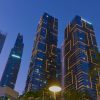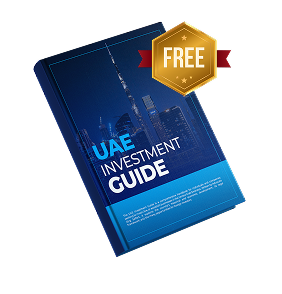Dubai’s Property Market 2025: Tight Supply, Rising Land Prices and a New Developer Landscape
Dubai’s real estate sector continues to outperform global markets, maintaining strong rental demand, rising transaction volumes and investor confidence despite economic headwinds elsewhere. According to insights from Firas Al Msaddi, CEO of fäm Properties, the emirate has now entered a defining phase where opportunity and risk exist side by side — driven largely by limited supply, soaring land prices and growing competition among developers.
Off-Plan Transactions Surge as Supply Tightens
In the first nine months of 2025, Dubai recorded a 20 per cent rise in off-plan transactions and a 10 per cent increase in resale activity, taking total deal volume from 48,000 to 53,000 units. Residential launches, however, dropped from 130,000 to approximately 120,000 units — a decline of 7.5 per cent year-on-year.
“Supply has tightened while demand continues to grow,” Al Msaddi noted. This supply-demand imbalance is a major contributor to price resilience across many segments. Developers face mounting challenges as land prices continue to rise, making it increasingly expensive to launch new projects and secure profitable plots.
Land values have jumped between 200 and 300 per cent since 2020, fundamentally reshaping project feasibility. In this environment, established brands with strong equity — such as Emaar, DAMAC and Aldar — hold a distinct advantage, driving faster sell-out cycles and commanding premium pricing.
Location Determines Performance as Market Becomes More Selective
While overall indicators point to sustained market strength, performance varies sharply by district. Areas like Jumeirah Village Circle, where an estimated 27,000 new units are being delivered, may see price corrections due to a near-term oversupply. Conversely, Jebel Ali — with around 29,000 units planned but infrastructure still taking shape — offers substantial upside potential as connectivity and amenities expand.
“Infrastructure development will be the key driver,” Al Msaddi explained. Neighborhoods positioned for major mobility upgrades or integration into new transit corridors are likely to outperform the broader market. These patterns mirror historical trends seen in thriving districts such as Dubai Marina and Downtown Dubai, where infrastructure investment played a defining role in long-term value appreciation.
Rental prices continue to hold steady across most communities, reinforcing Dubai’s appeal for both investors and residents. While localised adjustments may occur in saturated pockets, no broad correction is currently visible.
Abu Dhabi Gains Traction as Developers Seek Better Land Economics
With Dubai’s land prices reaching historic highs, developers have begun exploring alternative markets in the UAE — and Abu Dhabi stands out. Al Msaddi calls the capital “a historic opportunity,” noting that while premium plots in Dubai’s Al Wasl district have surged from Dh500 per sq. ft. in 2021 to Dh3,500 today, Abu Dhabi’s land valuations remain comparatively accessible.
This differential is drawing interest from both established and mid-tier developers seeking viable margins in master-planned communities. The trend mirrors diversification strategies used by leading developers across the region, including Binghatti, which has rapidly scaled its UAE portfolio in recent years, and internationally recognised players like Omniyat.
Brand Strength Now Shapes Investor Demand
As market competition intensifies, brand reputation has become a decisive factor in buyer behaviour. “Brand equity now plays a major role,” Al Msaddi emphasised. An established name such as Emaar or DAMAC has a fundamentally different sales velocity compared to a first-time developer, particularly in prime districts such as Business Bay and Palm Jumeirah.
While new entrants have made strong progress, rising borrowing costs and land premiums are expected to tilt the market toward developers with robust balance sheets, strong resale values and consistent handover records.
Dubai Remains the Global Benchmark for Returns
Despite diversification moves into global cities such as London, Dubai remains the flagship market for developers due to unmatched returns, liquidity and investor appetite. Al Msaddi notes that overseas expansions are strategic — aimed at brand visibility and portfolio balancing — rather than a shift away from Dubai’s core investment appeal.
Underlying this performance is a deeper lifestyle transition. “People aren’t just investing in Dubai — they’re choosing to live here,” he said. As the city transforms from a transient hub into a long-term home for expatriates, demand for residential units — both rental and owned — continues to rise across key districts such as MBR City and Dubai Hills Estate.
A Market at an Inflection Point
As 2025 closes, Dubai’s real estate sector stands at a pivotal moment — competitive yet rewarding, selective yet expansive. The message for developers and investors is clear: location quality, brand strength and market timing will determine long-term performance in the region’s most dynamic property landscape.
For expert insights, advisory support and curated investment options across Dubai’s top-performing communities, you can connect with Aurantius Real Estate for data-driven guidance tailored to your investment strategy.











